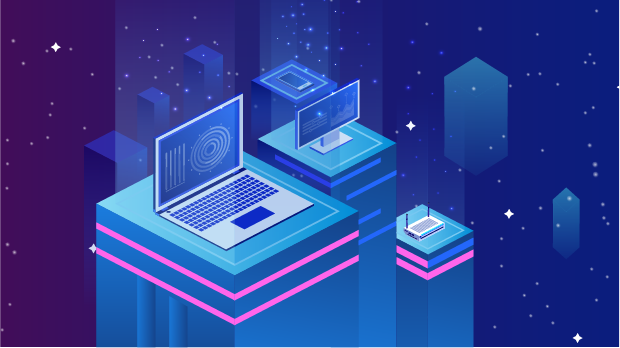In today's digital age, proxy services have become a key tool for users seeking to maintain anonymity, bypass geographical restrictions, and improve internet security. However, not all proxies are created equal. Among the various types of proxies available, PYPROXY Mobile Proxies' residential service stands out due to its unique features compared to regular proxies. This article will explore the key differences between the residential proxy service offered by PyProxy and traditional proxies, delving into the technology, applications, and benefits of each, while providing practical insights for customers looking to choose the most appropriate service for their needs. 1. What Are PyProxy Mobile Proxies Residential Services?PyProxy Mobile Proxies' residential service provides users with IP addresses that are assigned from real mobile devices, as opposed to traditional proxy services that utilize datacenter IPs. These mobile IPs are typically provided by mobile carriers and are associated with genuine mobile users. residential proxies are often more difficult to detect and block, as they are perceived as legitimate traffic from mobile devices rather than requests originating from data centers.This residential proxy service is designed to offer high anonymity and privacy by masking a user’s real IP address with one that is more difficult to trace back to a specific source. The key difference here is that mobile proxies simulate traffic from real mobile devices, which are less likely to be flagged by websites or services due to their legitimate nature.2. Regular Proxies vs. Residential Proxies: A ComparisonTo understand the distinction, let’s first define what regular proxies are. Regular proxies, often referred to as datacenter proxies, are IP addresses assigned to users from large data centers. These IPs are not linked to any real-world devices or locations but instead originate from the infrastructure of the data center itself. They are cost-effective and generally used for bulk web scraping, accessing geo-restricted content, and other basic proxy functions.While they serve their purpose, datacenter proxies have a few key drawbacks when compared to residential proxies:2.1. Anonymity and TrustworthinessOne of the biggest advantages of residential proxies, such as PyProxy Mobile Proxies, over regular datacenter proxies is their superior anonymity. Websites and services are increasingly sophisticated in identifying and blocking datacenter IPs due to their easily identifiable patterns. These patterns include rapid IP address switching, lack of geolocation consistency, and high volume of requests from a single IP range, all of which make it easier for websites to detect that the traffic originates from a proxy.In contrast, residential proxies are sourced from mobile devices that are often linked to legitimate users. This makes them much harder to trace back to a proxy service. Websites are less likely to block or flag these IPs because they appear as if they belong to ordinary mobile users, which significantly reduces the risk of detection.2.2. Geo-Targeting and Location AccuracyAnother key difference between residential and regular proxies lies in the accuracy of geo-targeting. Datacenter proxies typically have a set of IPs that are often registered in specific geographic regions, and these regions may not always match the actual location of the user. This discrepancy can sometimes lead to challenges in accessing region-restricted content or performing accurate web scraping based on geographic criteria.PyProxy Mobile Proxies, however, leverage IP addresses tied to real mobile devices, which are often much more accurate in terms of location. Since mobile users frequently change their location based on their physical movements, these IP addresses are often more dynamic and aligned with real-world geographic data. This makes residential proxies more suitable for tasks that require accurate geo-targeting, such as localized marketing campaigns or regional content scraping.2.3. Speed and PerformanceWhile regular proxies, particularly those from data centers, offer fast and reliable connections, they can sometimes face bottlenecks due to the high volume of traffic passing through the same servers. This can lead to slower response times, especially if the data center is handling multiple customers at once.Residential proxies, such as those offered by PyProxy, typically have slower speeds due to the fact that they are using mobile networks instead of dedicated servers. However, this trade-off comes with the benefit of increased security and reliability, as mobile networks are less likely to be congested or experience downtime, compared to datacenter-based infrastructure.3. Applications of Residential Proxies vs. Regular ProxiesUnderstanding the practical applications of both types of proxies can help customers determine which service best suits their needs. Regular proxies are ideal for basic tasks such as web scraping, anonymous browsing, or bypassing simple geo-blocks. Since they are relatively inexpensive, they are often the go-to option for users who need a proxy for low-risk applications.Residential proxies, on the other hand, are more suited for high-value use cases that require a higher level of discretion and trustworthiness. For instance, businesses that run large-scale web scraping operations, where accuracy and reliability are critical, would benefit from the residential proxy service. Similarly, marketers who are testing the effectiveness of localized ads or performing competitive intelligence tasks can leverage residential proxies to avoid being blocked by websites.4. Pricing and Cost-EffectivenessRegular proxies, being sourced from datacenters, are generally cheaper than residential proxies. They are an affordable choice for users who require large volumes of proxy traffic for simple tasks like basic browsing or scraping.In contrast, residential proxies come at a premium price because they provide a much higher level of security, trustworthiness, and anonymity. The costs associated with mobile proxies are generally higher due to the advanced technology behind them, the limited availability of mobile IPs, and the dynamic nature of mobile networks. However, for businesses or individuals who require the highest levels of privacy and geo-targeting accuracy, the higher cost of residential proxies may be a worthwhile investment.5. Which Service Should You Choose?When deciding between PyProxy Mobile Proxies’ residential service and regular proxies, the choice ultimately depends on the use case, level of security needed, and budget. For tasks that require high anonymity, geo-targeting accuracy, and avoidance of detection, residential proxies are the superior choice. They are ideal for advanced applications like web scraping, SEO tracking, and localized content access.Regular proxies, while cost-effective, are better suited for users who are performing basic tasks where security and accuracy are not as critical. For bulk web scraping or accessing geo-restricted content, they provide an affordable option, but with a higher risk of detection and blocking.In summary, the main difference between PyProxy Mobile Proxies’ residential service and regular proxies lies in the origin and trustworthiness of the IP addresses. Residential proxies are sourced from real mobile devices and are harder to detect, making them ideal for high-security, high-anonymity tasks. Regular proxies, on the other hand, are cheaper and more suitable for basic use cases, but with a higher likelihood of detection. By understanding the key differences between these services, customers can make an informed decision on which proxy solution is best suited for their needs.
Oct 22, 2025


































































